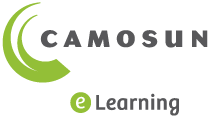Accessibility in Post-Secondary Education
The Accessible British Columbia Act, which came into effect in 2021, aims to make the province more inclusive by identifying, removing, and preventing barriers for people with disabilities.
Post-secondary institutions in B.C. are required to ensure equitable access to education and other opportunities for students with disabilities; this includes accessibility in digital spaces.
Digital standards are crucial for ensuring websites, online learning platforms, and other digital resources are accessible to all learners. These standards are defined internationally and are outlined in the Web Content Accessibility Guidelines 2.2 (WCAG).
Designing digital resources with accessibility in mind from the outset can help minimize the need for retrofitting and some academic accommodations.
In support of accessibility considerations in online course design and delivery, you will find information here about:
- Guidance for making your digital materials more accessible (in alignment with WCAG 2.2)
- Assistive Technology in our D2L Brightspace
- Universal Design for Learning (UDL) & UDL Projects at Camosun
- Academic Accommodations at Camosun College
Please Note:
The Accessible Camosun Committee wants to hear from students, staff and faculty. Share your thoughts on the college’s Accessibility Plan or report a barrier.
